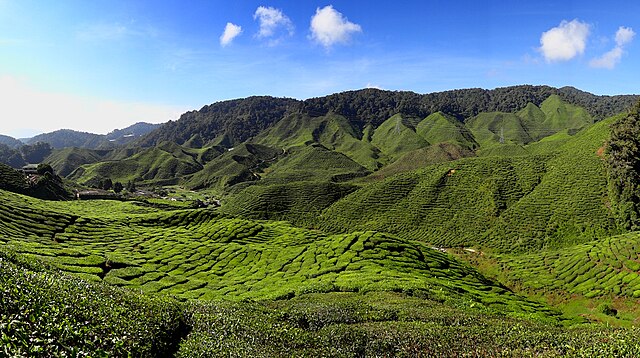Kuala Lipis is a mukim and capital of Lipis District, Pahang, Malaysia with a population of 20,000.
The old town area of Kuala Lipis.
'0' Milestone distance marker, built during the colonial era, near the post office in Kuala Lipis.
Thean Hou Temple, a Buddhist temple in the middle of the old town of Kuala Lipis. Erected in 1898, it was rebuilt in 1926 after a flood.
Kuala Lipis railway station, Kuala Lipis, Pahang, Malaysia.
Pahang, officially Pahang Darul Makmur with the Arabic honorific Darul Makmur is a sultanate and a federal state of Malaysia. It is the third largest state in the country and the largest state in Peninsular Malaysia by area, and ninth largest by population. The state occupies the basin of the Pahang River, and a stretch of the east coast as far south as Endau. Geographically located in the East Coast region of the Peninsular Malaysia, the state shares borders with the Malaysian states of Kelantan and Terengganu to the north, Perak, Selangor and Negeri Sembilan to the west, Johor to the south, while South China Sea is to the east. The Titiwangsa mountain range that forms a natural divider between the peninsula's east and west coasts is spread along the north and south of the state, peaking at Mount Tahan, which is 2,187 metres (7,175 ft) high. Although two thirds of the state is covered by dense rain forest, its central plains are intersected by numerous rivers, and along the coast there is a 32-kilometre (20 mi) wide expanse of alluvial soil that includes the deltas and estuarine plains of the Kuantan, Pahang, Rompin, Endau, and Mersing rivers.

Sultan Ahmad and his attendants circa 1897. The ruler seized the Pahang throne in 1863 after six years of civil war against his brother Tun Mutahir and his British-Johor allies. His reign marked the restoration of Pahang as a Sultanate and modernisation of the state.
Cameron Highlands.
Cherating beach.
Mount Tahan, the highest mountain of Peninsular Malaysia.








